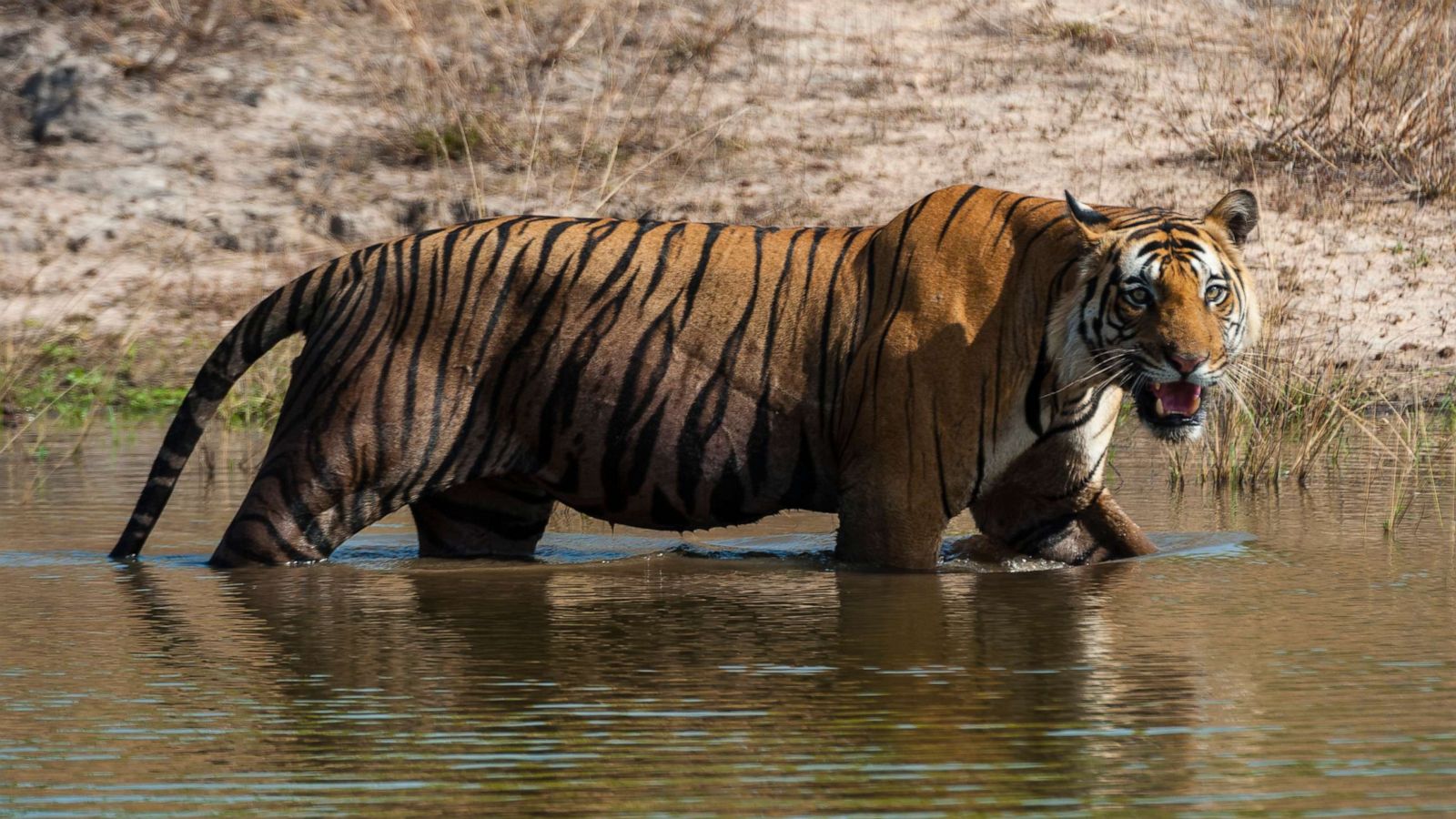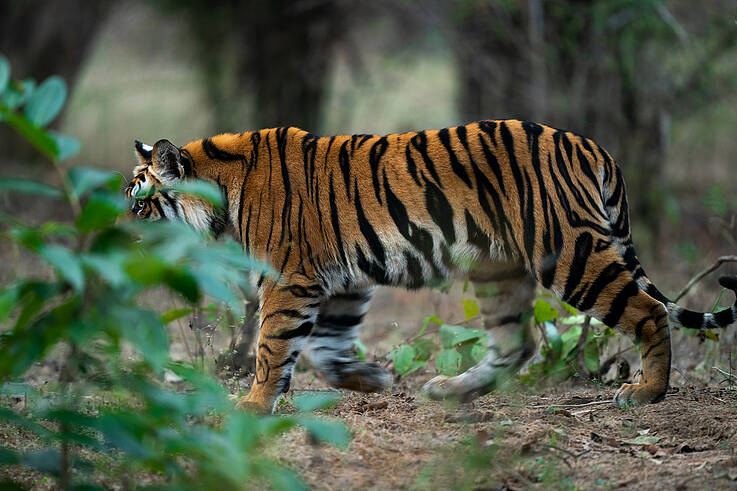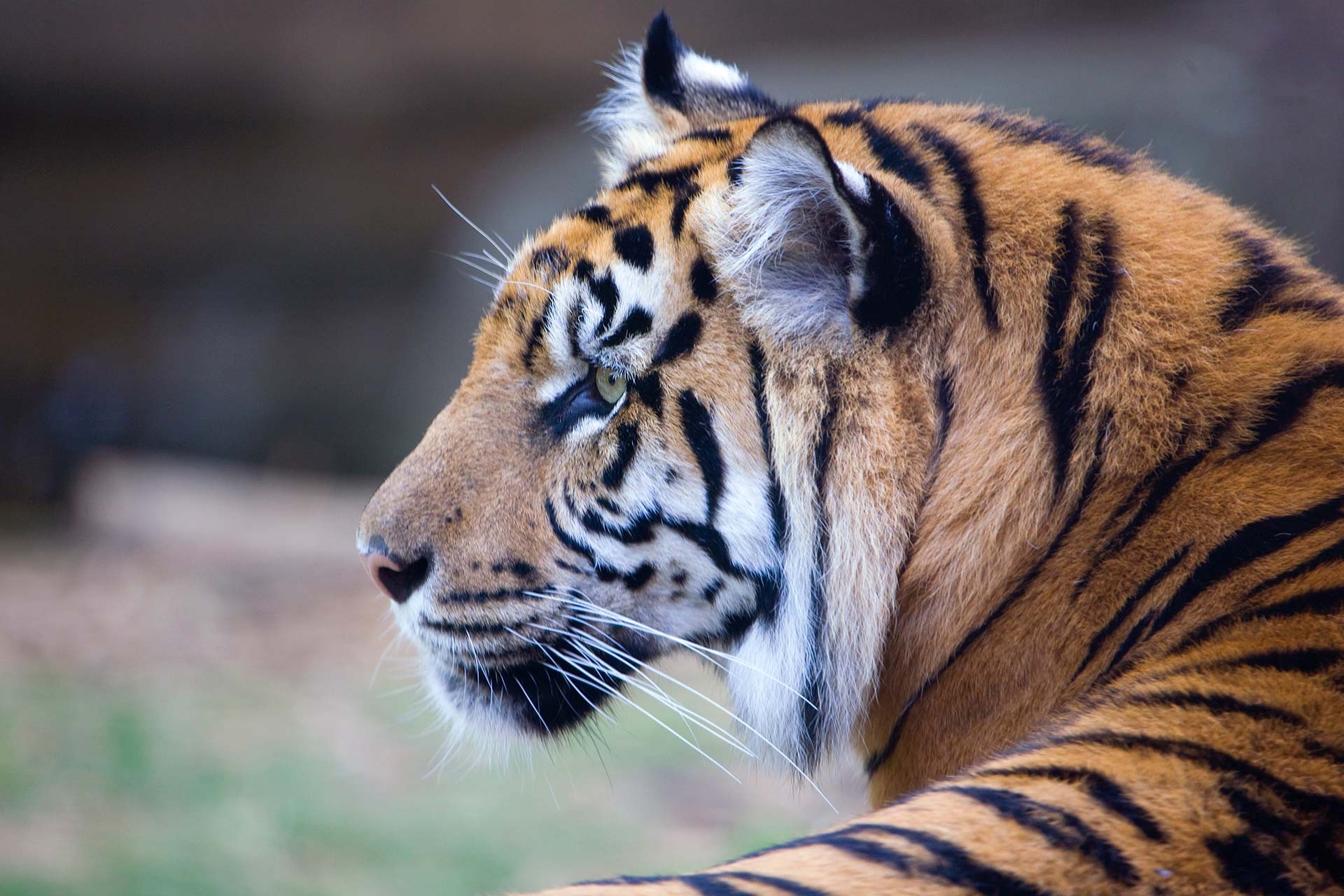Secrets Of The Sundarban Tigers: Encounters with the tiger in the Sundarbans’ riverine and mangrove forests emphasize some of its numerous roles, including those of apex predator, flagship species, photographer’s subject, fisherman’s nightmare, ghost, fictive kin, and deity.
The Sundarbans’ riverine woodlands are quiet this afternoon. On a remote, meandering creek, a distant boat makes an abrupt turn and accelerates in the other direction. My weeklong jungle guide, Ramkrishna Mondal, is standing up. He yells, “Chal, chal, CHAL!” at our boatman Robi who has just left for lunch. As his 15-year-old son is about to take the wheel, Robi dashes to the cabin and starts the engine with his sticky, curry-smeared fingers. Let’s know about the Secrets Of The Sundarban Tigers.

Mondal informs me that there is only one explanation for taking such a perilous detour in the Sundarbans. “Bagh! (Tiger!) Let’s check your luck. Neelima, Robi’s wife and the in-house chef has just arrived next to me from the cramped area under the deck. My serene, sonorous morning has just reached its turning point. Let’s know about Secrets Of The Sundarban Tigers.
The forest significantly changes as Robi propels the ancient, chugging motorboat through the river. We have been sailing through isolated streams that are surrounded by thick, emerald mangroves so far. But now, as our boat travels over a seemingly infinite body of calm water, there is briefly no sign of land in the distance. For the first time, I am struck by the immense size of the 10,000 sq. km. mangrove forest that spans Bangladesh and India. Let’s know about Secrets Of The Sundarban Tigers.

Before moving near the Bay of Bengal, we are at the Panchmukhani moon, where five enormous rivers with huge mouths converge. The 2019 monsoon caused a terrifying maelstrom at the “mohona,” or confluence, that threatened to capsize the tourist boat that Mondal was in charge of. However, there is no time to let the enormous scale of this extensive network to paralyze you. The people on the boat start cheering as we get closer to the island. The tiger was within a few seconds of us. Let’s know about Secrets Of The Sundarban Tigers.

I sigh. Neelima gives me a comforting shoulder pat before softly leaving. Let’s know about Secrets Of The Sundarban Tigers.
Tigers can only be found in the Sundarbans, a mangrove forest, in the entire globe. Although locating tigers in this forest is more difficult than in any other forest, it is also the greatest continuous tiger habitat in all of Asia.
Let’s examine the figures. A total of 102 islands make up the about 4,000 square kilometres Indian Sundarbans; 54 of them are home to people, while the other 48 are protected as part of the Sundarbans Tiger Reserve. The Sundarbans Tiger Reserve, which was established in 1973, spans 2,585 sq. km of the Indian Sundarbans. Over a hundred tigers dominate this area. The designated core region, which spans around 1,330 sq. km., is still off-limits to tourists. The rest is the safety perimeter. We were riding through the Sajnekhali Wildlife Sanctuary, a network of rivers and islands, which is formed out of the buffer zone and covers an area of around 360 square kilometres. Let’s know about Secrets Of The Sundarban Tigers.

The Sundarbans is the biggest continuous tiger habitat in Asia, yet unlike other forests, it is more difficult to see tigers here.
Add to this a mangrove forest that is nearly impenetrable, subject to twice-daily tides, and protected by king cobras, pythons, and estuary crocodiles. We keep a safe distance in big motorboats through vast waterways, a few feet away from the boundaries of the islands, unlike other sanctuaries that enjoy the luxury of safari jeeps driving deep into their thickets. Let’s know about Secrets Of The Sundarban Tigers.

Every river divides like veins into little streams where tigers lurk, but we are not allowed to access these. A few streams have crimson flags at its mouths to signify the death of a fisherman or a crab collector who was attacked by a tiger near the stream’s banks. Because seeing a tiger in the Sundarbans along its broad waterways is so uncommon, guides inform me that the tiger chooses whether or not it wants to be seen. Let’s know about Secrets Of The Sundarban Tigers.
However, Mondal is muttering to himself and pointing in a different way. His mind is whirling, I can hear it. Mondal, who was raised on one of the 102 islands that make up the Sundarbans, has a unique ability to interpret this enigmatic forest that no one with any academic training has. He does not view the tiger as an unusual species. The tiger is affectionately referred to as “mother” or “maternal uncle” back in Bali, the Sundarbans island where he was raised. When he awoke this morning, he prayed to Bonbibi, the woodland goddess who guards all its occupants against the tiger demon, before going outside. The tiger gives his life meaning. Turn, turn, he exclaims. Let’s know about Secrets Of The Sundarban Tigers.

Now, the black, sinewy arms of Robi are urgently turning the wheel in another way. When pushed past its breaking point, the boat violently coughs many times before reluctantly going off. If this tiger is who I believe it to be, Mondal declares, “I know where he’s going.” Let’s know about Secrets Of The Sundarban Tigers.
A little while later, we are parked near the stream’s mouth, where the tide is retreating and revealing shimmering, golden coastlines. Neelima is standing next to me once more. Let’s know about Secrets Of The Sundarban Tigers.
We stand there for some minutes while the glaring afternoon sun pierces our eyes as it reflects off the wet surface. There are no alarm calls from deer. There aren’t any rhesus macaques barking in alarm. I don’t notice any warning indications of a tiger approaching. Mondal’s unshakeable conviction stood out, though. The tiger then appears from behind the dense cover of mangroves. Let’s know about Secrets Of The Sundarban Tigers.

Its delicate paws bury themselves several inches deep in the wet clay. No skinny cat here. It is a massive, powerful male, covered in salt and silt, with a full belly hanging heavily. It has thick, water-dripping, dark amber legs. Clay sticks to its layer of flame-coloured dirt like a pack of mud.
I observe that it has considerably longer hindlimbs than forelimbs as it carefully avoids the aerial roots of the Keora mangrove, which stick out like spears, as it descends the coast. It can leap across broad waterways with stunning elegance because of its hindlimbs. Mondal draws attention to the creature’s small, robust forelimbs, which feature huge, powerful paws designed to slay prey. Mondal, who is pallid, mumbles, “Nontu.” “Maneater. extremely intelligent He attacked a fisherman last week. The fisherman used a knife to protect himself, but Nontu murdered him moments later. I gasp. It disappears into the dense jungle in a matter of seconds, but Mondal is pursuing it. Let’s know about Secrets Of The Sundarban Tigers.

The tiger in the Sundarbans is unlike any animal I have ever seen. The mainland tiger is larger, leaner, and has a warm yellow coat. Its Sundarbans relative is more stocky, more reddish-brown in colour, and smaller overall. It also has a much tougher existence. Twice daily, hundreds of kilometres of the forest are submerged by the strong tides, forcing the tigers to live amphibiously and consume salt water. The tiger’s environment has made it a skilled long-distance swimmer who hunts in tidal currents with the same dexterity as it does on land. Let’s know about Secrets Of The Sundarban Tigers.
Sy Montgomery notes that its tail is muscular and thicker too in her book Spell of the Tiger: The Man-Eaters of Sundarbans. It is whipped about by the tiger like a swimming crocodile. In addition to its normal prey of chital, wild boar, and other animals, the Sundarbans tiger also hunts fish, crabs, turtles, and water monitor lizards. This is in contrast to Bengal tigers in other places, who only consume a small variety of foods. Rarely, it engages in a brutal struggle for a kill with the similarly formidable estuary crocodile.

Jayant Kumar Mallick, a wildlife biologist, mentions in his research that the Sundarbans tiger is also known to hunt snakes. After the devastation of Cyclone Aila in July 2009, an autopsy of a tigress carcass revealed that she had consumed two venomous snakes, including a king cobra!
We closely follow Nontu as he moves a few feet from the edge of the island while Mondal steers the boat as we warily watch his amber coat move through the mangroves. But he is challenging to find.
His black stripes appear behind the vegetation like shifting shadows. But for a little period, he turns and looks directly at us. I get a chill down my spine. I’m sweating palms. I do not grab my camera. Instead, I turn my gaze back in astonishment. His face is a lovely flame-yellow, in contrast to the saturated, dark golden body. The head is supported by a short, robust, and muscular neck that serves as a tenacious foundation for a powerful jaw that must expand widely in order to plunge its long canines deeply into prey. Neelima and I alternate using binoculars as we see the tiger sneaking in and out of the jungle for a half-hour before it eventually vanishes behind a mangrove known as the tiger palm. We are trembling with joy.

Over the course of the next week, I hear multiple accounts of “Nontu,” who is said to abduct a person once a month with such amazing stealth that frequently, those nearby only become aware of the disappearance after it is too late. Then, in eerie quiet, he drags these bodies along muddy coastlines while swimming through seawater with them. Another native of Bali claims that Nontu has no regard for boundaries. He is frequently observed swimming for miles across big rivers and covering great distances in the Sundarbans.

I was informed that a boat full of foreign tourists witnessed Nontu hunt and consume an elderly fisherman a few days before to our trip. The forest department made enormous attempts to persuade them to erase all pictures out of concern that the gory photos would cause unwarranted fear. A few weeks later, Nontu was spotted once more, but this time she was in a completely new location and far away. He’s evaded capture several times already. Mondal and I go to the Sajnekhali Forest Department headquarters that evening, where he shows me many iron tiger cages and traps. He points to a particularly huge tiger shot and explains, “He understands how to polish off a goat in a mechanically built trap cage without getting caught.”
Wildlife specialists tell me that Nontu is most likely a composite of several individual tigers and not a true representation of the species. Tigers in the Sundarbans have no recognized names. The majority of Sundarbans tigers do not have defined territories, as the approaching tide washes away their scent imprints. Ratul Saha, who oversees the Sundarbans landscape project for WWF India, is certain that we must dispel the myth of the “maneaters of Sundarbans” and cease disseminating unneeded false information.

He claims that the Sundarbans is a challenging hunting environment. Fishermen, crabbers, and honey gatherers who venture into the forest—often without authorization or protection—are little more than simple prey for tigers. “The tiger from the Sundarbans doesn’t have a preference for human meat. He contends that there is no scientific evidence to support this. “A keen chital that runs faster and has a greater understanding of the jungle is harder to hunt than an unarmed human. Simple.”
But in the Sundarbans, legend and rumour prevail over reality. For the locals, tigers are more than simply apex predators; they are also demon gods that must be placated and the vengeful ghosts of ancestors. They are feared, worshipped, and respected; they are cloaked in mystery and myth. One of the most well-known stories on the islands is the tale of Dakshin Rai and Bonbibi, which is frequently performed as a musical drama at local festivals and also for visitors in resorts. The tiger demon Dakshin Rai plays a variety of roles in the many versions of the tale, but his trait of being an egotistical and hungry dictator who assumes the appearance of a monstrous tiger and assaults the defenceless inhabitants of the Sundarbans never changes.
He is the master of all tigers; they terrorize the woodlands and prey on people. After the villagers had prayed for a while, Allah sends Bonbibi, a Sufi saint’s daughter, to overthrow him. Rai understands he is helpless when he faces Bonbibi in combat and begs for mercy. Although Bonbibi is kind and saves his life, she forbids him from harming people who revere her. There are several Bonbibi temples scattered around the Sundarbans, each with Dakshin Rai serving as her student. In Hindu-dominated communities, the Muslim goddess known as “bibi” often assumes the appearance of Durga while riding a tiger and wearing a vermillion sari and a golden crown.

Her temple resembles a Sufi shrine in communities with a large Muslim population. However, villagers across the board often worship to the image because they think it is her protection that keeps the tiger away.
That night, my brain is filled with tales and talks, but largely with flashes from the unusually protracted experience with the tiger. I sleep restlessly. The next morning at 6 am as I make my way to the jetty for another safari excursion, Mondal is grinning while standing on the deck of the boat. “You appear to have had little sleep. He chuckles, “Did you dream about the tiger? “Avoid worrying. Every night, I dream about him.

The shared experience has eliminated any discomfort that could have arisen on our first day of the trip because seeing a tiger in the Sundarbans is such an extraordinary and unusual occurrence. Robi, Mondal, Neelima, and I discuss the events of the previous day over Lucchi, a steaming, spicy vegetable curry, and black coffee. We show off the blurry photos and shaky videos we took using our inexpensive smartphones. But today, we spend the day exploring confined waterways in search of fishing cats and smooth-coated otters. We have no plans to see the tiger. It has been crossed off our list.
As the day draws to a close, Mondal takes us to the Sudhanyakhali watchtower, a three-story concrete skeleton that overlooks a man-made freshwater body of water. A modest Bonbibi shrine and a blackboard that lists tiger sightings from the area are located at its foot. The most recent occurred a few weeks ago. We hear someone cry, “Bagh!” and while I continue to look at the garishly painted Bonbibi, we rush to the top. This time, rhesus macaques scramble in fear when a chital cries out in alarm.
I anticipate with trepidation. There it is, then. This time, a majestic tigress comes into view, her broad tail swishing proudly in the air as she strolls into the brilliant sunset light. She is younger and somewhat slimmer than the man we previously saw, but as lovely. As we both gaze at Neelima in awe, she tightly grips my hand. I’m already aware that I’ll have another restless night. In addition to the islands in the mangrove forest, the tiger also rules over legends, myths, rumours, temples, and dreams.
Did you witness live tigers? I’m asking if you have ever saw a genuine Tiger in person. If not, you may still get that exhilarating sensation right away if you visit Sundarban. Every time you visit Sundarban, you learn something new about this intriguing location. Those who adore nature always learn something new when they go there.

All animals are our friends, even tigers, in a similar way. You may counter that they are erratic and harmful. Yes, they are, I agree. They will, however, become your friends and like being with you if you can be their friend and treat them well. Since we humans treat them improperly and scare them away, they turn vicious and attack us in order to get what they need. Therefore, the greatest thing we can do while visiting any wild animal is to show them a little more love and compassion. This will greatly simplify and improve things.
Why are Sundarban Tigers World Famous?
There are several reasons why Sundarban’s tigers are so well-known. The tigers in this area have body stripes that are both yellow and black. Only the Royal Bengal Tigers are experts at this. Due to widespread hunting and utilization for various uses, they were on the verge of extinction in the recent past.
Then UNESCO arrived to save them. They not only prevented the extinction of the tigers but also prevented additional threats to the Sundarban region. These amazing tigers may be seen in the Sundarban woods and Sundarban National Park.
You must have this once-in-a-lifetime experience right away.
DISCOVER THESE WILD BEASTS AND ENJOY THEM NOW BEFORE IT’S TOO LATE.
Visit Sundarban and feel happier.
We have Sundarban Tour Packages every day
For Booking Of Best Sundarban Package( Starting from 2799/-)
Name: Dilip MAity
Organization: Royal Sundarban Tourism
Organisations Web link: https://royalsundarbantourism.com/
Contact: +917439965413 / 8584838109
Gpay / Phone pay : 9804049535
Email: info@royalsundarbantourism.com
Address: Tiger More, Gosaba, Pakhiralay, Pakhiralay Main road, District- 24 Parganas South, West Bengal 743370


